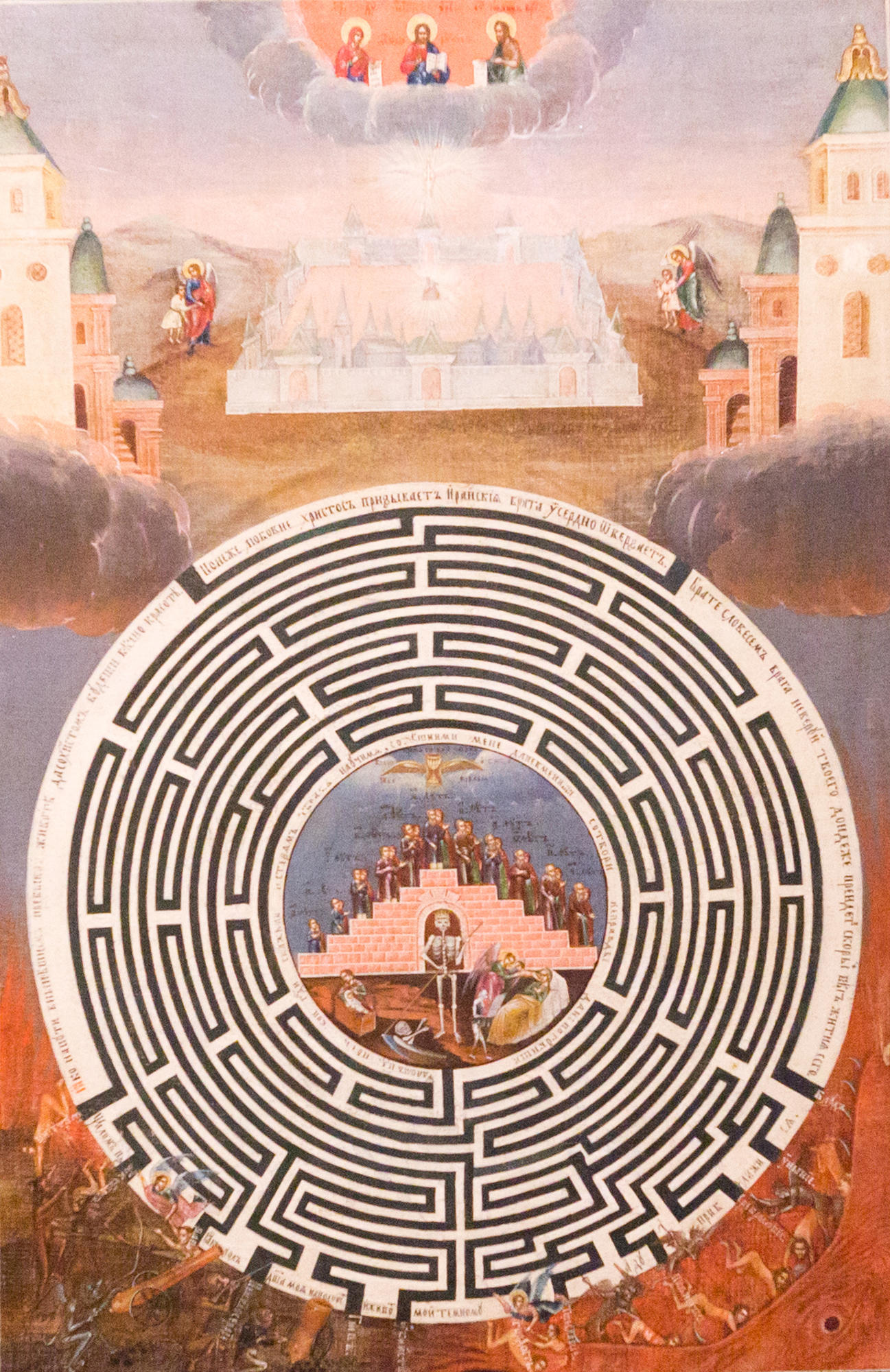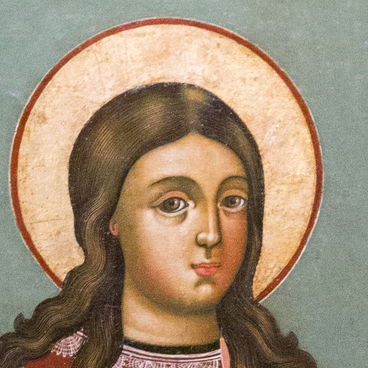The icon ‘Spiritual Labyrinth’ belongs to the so-called symbolic-didactic trend in icon painting. It developed in the Russian religious art in the XVI century. Icons of this type are usually related to the interpretation of theological literature and are of an edifying nature.
Spiritual Labyrinth
Creation period
late XVIII – the first third of XIX century
Dimensions
80x57 cm
Technique
Oil on Canvas
Collection
18
Open in app#1
Unknown artist
Spiritual Labyrinth
#4
#5
The Spiritual Labyrinth’ is an allegoric representation of the earthly course of a common Christian. The portrayal of the spiritual search of man in a labyrinth appeared first in West European prints of the XVII century. Russian icon painters turned to the subject only a century later. The topic was also copied not only in icon painting but also in folk art. But wherever painters portrayed a labyrinth, it almost always symbolized a search for spiritual and physical salvation.
The master divided the space of the icon ‘Spiritual Labyrinth’ into three parts: the upper — heaven with the city of Jerusalem, the middle — earthly life, and the bottom — hell. In the center the author portrayed a labyrinth with many exits. Two of them lead to heaven, and eleven — to hell, one exit for each sin. From right to left: adultery, despair, greed, alcoholism, vanity, pride, murder, anger, mercilessness, envy, denigration, gluttony. The icon painter added another five to the seven mortal sins. This way he wanted to strengthen the moralizing nature of the icon.
#2
Inside the labyrinth is a circle where the painter shows the beginning and end of human life. On the left, the master portrayed a newborn in a cradle, who the death wants to take away. A dead person is lying on the right. His soul is accepted by an angel, but next to him stands a demon holding the list of his sins. The earthly course of a Christian is symbolized by a ladder: a man and a woman are walking on it. In the beginning they are children, and on the last step already very old people, signatures above the characters spell their age — from one to ninety years. In terms of composition and arrangement of space, the icon is not quite canonical: the master used the technique of inverted perspective and painted remote objects larger.
In terms of its technique, this piece resembles a print or a book illustration, rather than an icon. The author painted the labyrinth very graphically, drawing a geometrically precise ornament. Also unlike traditional icons, the painter used a lot of text on the image, while in iconography words are of a secondary nature, used in accordance with canons. These features make the ‘Spiritual Labyrinth’ a unique piece of iconography.
In terms of its technique, this piece resembles a print or a book illustration, rather than an icon. The author painted the labyrinth very graphically, drawing a geometrically precise ornament. Also unlike traditional icons, the painter used a lot of text on the image, while in iconography words are of a secondary nature, used in accordance with canons. These features make the ‘Spiritual Labyrinth’ a unique piece of iconography.
#6
New Jerusalem Museum
read morehide
00:00
01:12
1x
Spiritual Labyrinth
Creation period
late XVIII – the first third of XIX century
Dimensions
80x57 cm
Technique
Oil on Canvas
Collection
18
Open in app
Share



